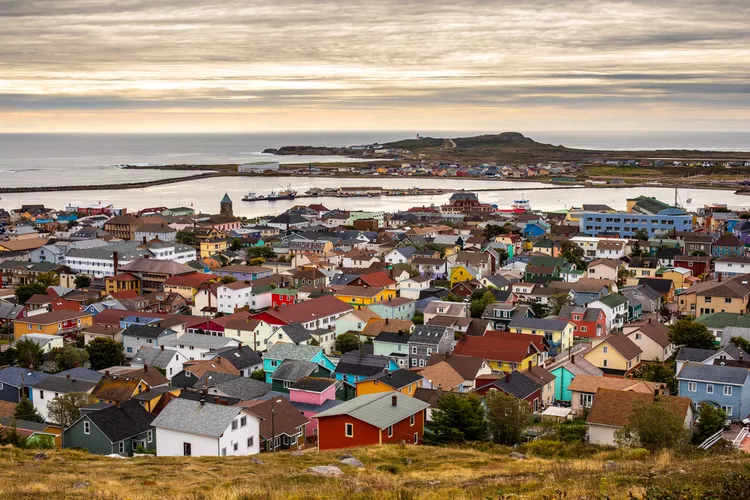I first learned about the only piece of French land in North America the old-fashioned way: by looking at a world map. I looked at Newfoundland and saw a finger on a topographic map that seemed to be pointing at two tiny dots neatly inserted off the coast of Canada. The points are Saint Pierre and Miquelon, a French territorial archipelago about 15 miles from Newfoundland. As I discovered, low-tech is the right way to get to these islands; The timetable is just a suggestion. Traffic lights don’t exist.
Time itself is an afterthought. The islands have their time zone, which is half an hour ahead of the mainland. Depending on where you are, your phone may swing back and forth between a Canadian and French carrier, changing the clock every time it bounces off a cell tower. This is only a problem during lunch and dinner when everything is closed except for restaurants, which are strictly open from 12 noon to 2 p.m. and open again after 7 p.m. (Make reservations).
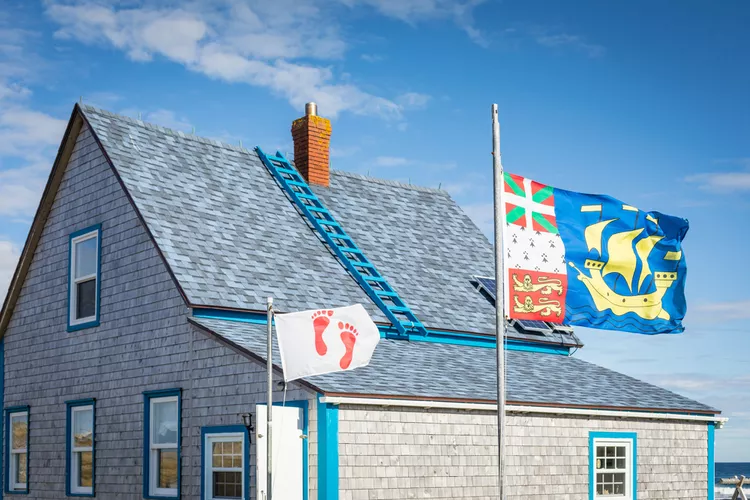
There is no doubt that this is all France, but in a completely different landscape, with rocky promontory coastlines, peat bogs, wild orchids, and dune grasses. French is, of course, the dominant local language. However, you’ll occasionally find English speakers – even more so in Saint-Pierre, the island’s commercial hub, home to about 5,000 people within 10 square miles. The neighboring island of Miquelon has only about 600 inhabitants (in the summer, there are plenty of free-roaming horses and vacationers).
My journey to understand the islands began at the Musee de L ‘Arche in Saint-Pierre, a three-story museum that serves as a comprehensive guide to the islands’ centuries-old history. The museum’s highlights include the arrival of fishermen from the Basque, Norman, and Brittany regions of France between 1520 and 1536, who eventually established a permanent settlement in 1604. The islands’ ownership was fiercely contested between Britain and France for nearly a century until France finally gained control in 1763. The islands then became a refuge for Acadian deportees, a significant chapter in their history.
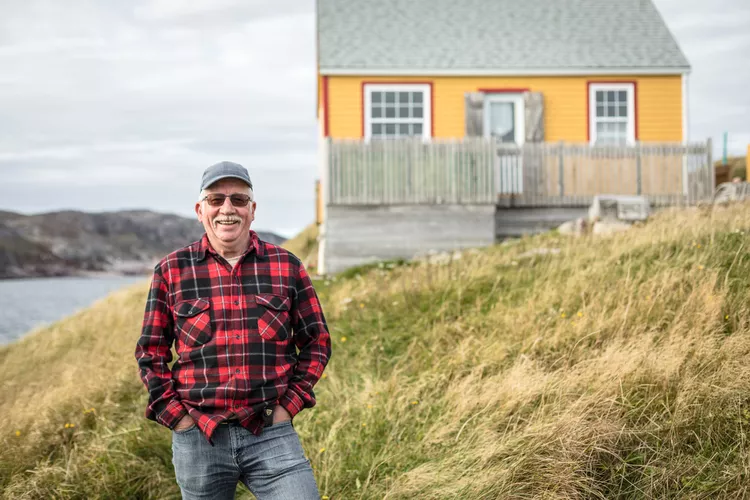
Cod fishing continued to attract more immigrants in the 19th century until it was stopped in the early 20th century due to the collapse of the fish population. Saint-Pierre found itself in the unique position of being an outpost of French jurisdiction during Prohibition when the storage and sale of alcohol – especially to smugglers – made many islanders wealthy. (Al Capone was both a regular and frequent visitor.) The museum’s collection of washed, vintage crates and bottles is overshadowed by the guillotine downstairs: it was the only guillotine ever used in North America during the 1889 execution in St. Pierre.
After a leisurely stroll to the marina, I embarked on a unique journey with my knowledgeable guide, Eric Simon. We boarded Le Petit Gravier, a swift 15-minute ferry to and from L ‘Ile-aux-Marins (Mariner’s Island). The absence of roads or cars on the island, last inhabited in the 1960s, is underscored by a cluster of wheelbarrows by the pier. Today, abandoned settlements are interspersed with restored summer homes. We traversed manicured trails teeming with knee-high grass and wildflowers, as Simon, with his wealth of local knowledge, provided a comprehensive hour-long tour of the island’s history.
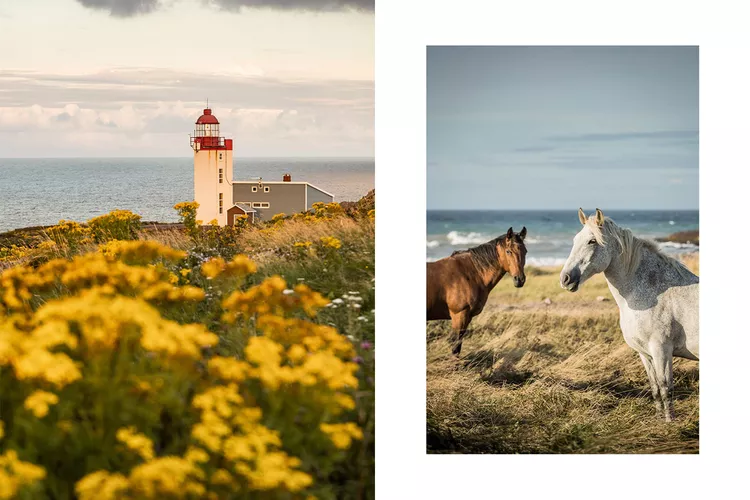
The island would look like a deserted coastal ghost town without a guide. We passed large tracts of rock that used to be used for drying fish. The sound of folk music rehearsals wafted out of the church, past a shrine, and through the island’s seaside cemetery. Simon identified the oldest grave, an 1876 rusty iron cross with a point and no markings. We parted ways outside the Archipsamet Museum so I could peruse it at my leisure. The museum, a former schoolhouse on the island, is now filled with various antiques and artifacts related to L ‘Ile-aux-Marins’ past. Outside, I follow the path to a quiet rocky beach before returning to the ferry.
The following day, at the family-run hotel Saint-Pierre Auberge, breakfast was served in the hotel kitchen with various pastries. After eating chocolate tarts, I returned to the dock to catch the ferry to Miquelon. During the 90-minute journey, fog swept over the coastline. Miquelon has three main roads and is much quieter than its smaller neighbor. Even smaller is Langlade, home to free-grazing horses and seal herds on the Grand Barachois (best seen from the zodiac). Langlard was once a separate island but is now connected by a sandy gorge.
I met Francois Hoccry from the Maison de la Nature et de l ‘Environnement(the island’s interpretive nature museum) on one of Miquelon’s main activities, a walking tour. We set off for Boeufs, arguing about how the fog would go. We are almost on the same latitude as Paris, but the landscape looks completely different. Thanks to the Labrador cold snap in the North Atlantic, I saw the only place in France with a boreal forest. Hockley showed me four carnivorous plants: wild irises, orchids, daisies, buttercups, pitcher plants, and wildflowers. At a lookout, we watched the birds while enjoying Labrador tea made from leaves.

After an outdoor lunch at the Mayou ‘noise restaurant (paired with locally brewed Miqu ‘Ale), I stroll through brightly colored houses to the town center. The small village center of Miquelon is full of landmarks that tell the story of how people came here by choice or accident. In Catholicism, Saint Pierre is the patron saint of fishermen, so it’s only fitting that the Church of Our Lady of Ardilier has a large wooden boat commemorating the community’s seafaring history. A monument outside details the “Acadian Upheaval,” when French Acadians were expelled from Canada under British rule. Across the street, the Miquelon Museum displays family antiques, shipwreck artifacts, and other unique glimpses of island life.
In the afternoon, I head to Langlade and marvel at the vast empty beaches and holiday homes surrounded by overgrown fields. If Saint Pierre is a metropolis, Miquelon is a suburb, and Langrade is a rural wilderness. On the other side of the island are campervans with no electricity or amenities, a popular destination for St. Pierre residents looking to reconnect with nature. On the way back to my room at Au P ‘tit Kakawi, a five-room bed and breakfast named after a long-tailed duck found on the island, I passed herds of horses along the isthmus.
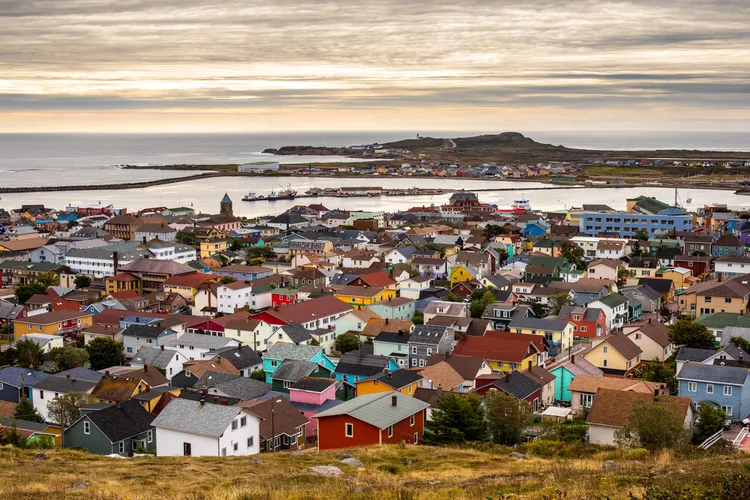
Back in Saint-Pierre, I join the morning line to the newly opened Boulangerie des Graves, a charming bakery known for its freshly baked pastries and bread, next to the equally newly opened Las Terasses du Port hotel, a boutique hotel with stunning views of the bay. I sat by the water and enjoyed a cup of coffee, savoring the unique charm of this place. I looked across the bay at the colorful houses and boats that make up St. Pierre. Later, at low tide, in the same place, it was hard to tell whether every black bump in the harbour was a rock or a seal – until it wobbled and stretched. I walked 15 minutes around the bay and back downtown, passing nondescript architectural warehouses that had been used to store wine barrels during Prohibition.
On Sundays, when most businesses are closed, the islands come alive with unique cultural experiences. I found myself in a trio room, watching locals practice Basque pilot games. It was a beautiful sight, a community coming together to celebrate their heritage. A kind stranger even invited me onto the field to learn the art of throwing and catching a rigid ball, a skill that has been passed down through generations.
I walked past the lighthouse, a historic structure that has guided ships to safety for decades, and in the distance was L ‘Ile-aux-Marins, a small island with a rich history of fishing and maritime activities. Rows of brightly colored little salt lakes (small colored salt-box huts for drying fish) dot the shoreline, with boats parked directly on land outside. Saline 20 is home to Les Zigotos, a group of volunteers dedicated to preserving the culture and history of the dory, a traditional wooden boat in St. Pierre. At the end of the 19th century, there were over 500 handmade vessels. Pierre Herzada and his father, Gesada Herzada, took me on a tour of their maritime museum and a boatmen’s workshop that used to be a Prohibition warehouse. On the way back, we stopped at the football field to drop off Saddam’s son’s backpack, which he had forgotten earlier.
The real appeal of Saint Pierre and Miquelon is its joie de vivre. This is a place for you to plan only some hours of every day. At times, the islands of Saint Pierre and Miquelon feel familiar. At other times, they think entirely unfamiliar. But the islands seem happy to live in their world and lives.
